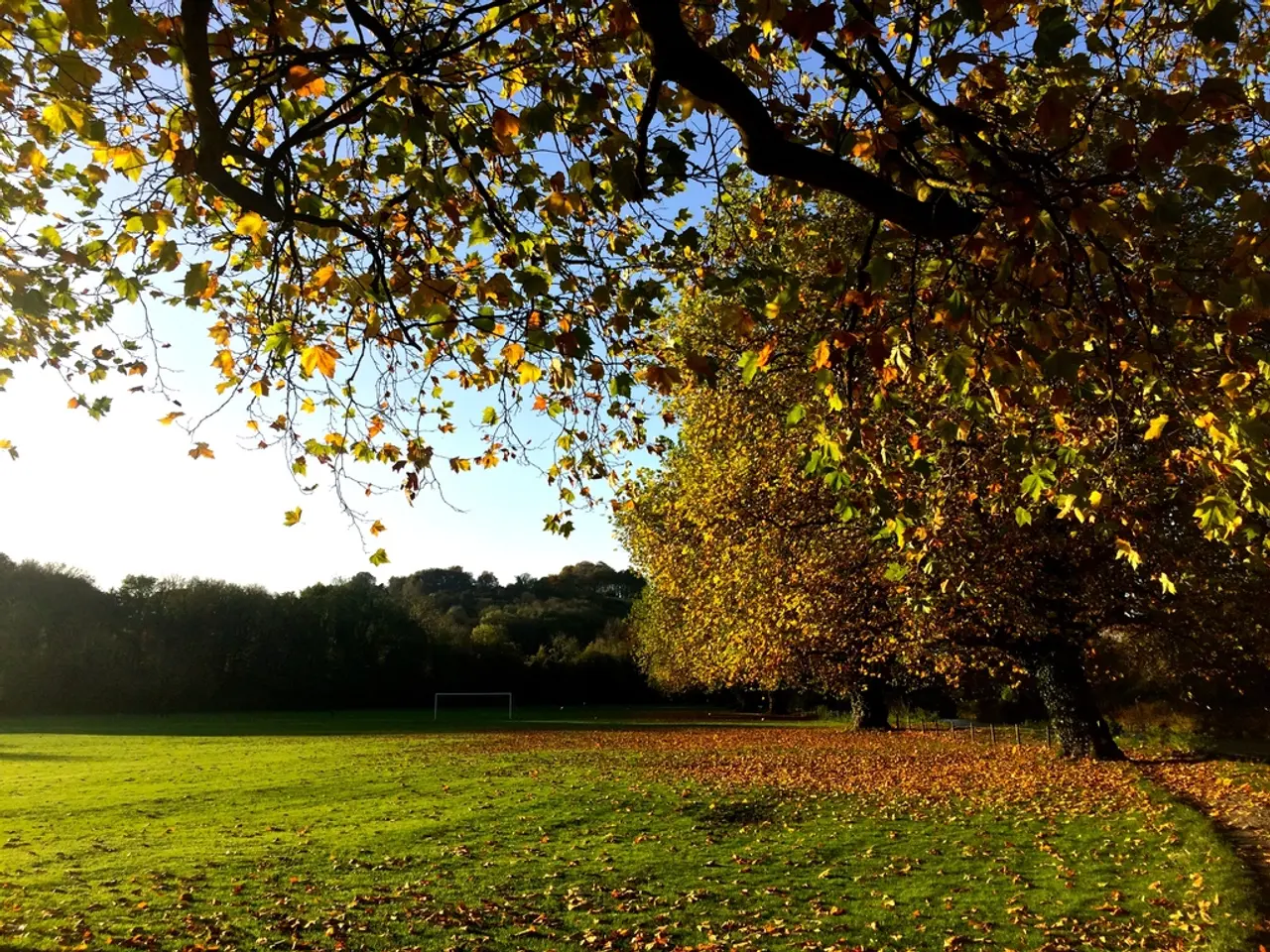Guide on Hedge Planting Techniques
In the heart of the British countryside, a centuries-old skill continues to thrive: hedge laying. This traditional practice involves creating living fences that not only serve as functional barriers but also contribute to the natural beauty of the landscape. Here's a comprehensive guide to this timeless craft, including essential tools and regional county styles.
Step-by-Step Guide to Hedge Laying
- Planning and Preparation Begin by selecting an appropriate hedge species, such as hawthorn, blackthorn, or hornbeam, based on your site's conditions and purpose. Clear the area of grass, weeds, and debris to give the hedging plants ample space to establish. Prepare the soil by loosening it and adding organic matter to boost nutrients.
- Tools Needed Essential tools for hedge laying include a billhook or hedge laying billhook, a hand saw or pruning saw, loppers or secateurs, a mallet and stakes, and spar wedges. These tools will ensure you can cut, bend, and secure the stems effectively.
- Cutting and Laying the Hedge Select the strongest stems and use the billhook to cut part-way through a stem at an angle near the base without severing it fully. Bend the partially cut stem horizontally or at a shallow angle to the ground. Interlace stems closely in a row to create a thick, impenetrable barrier. Use stakes and wedges to hold the laid stems firmly upright. Trim any side shoots to encourage new growth and thicken the hedge.
- Spacing and Planting Density For hedges planted from scratch, space plants 2-2.5 per metre for a standard 2m high privacy hedge. Ultra-dense screens benefit from 3 plants per metre or zig-zag double rows (around 5 plants per metre total) to quickly fill gaps. Avoid overcrowding to prevent poor air flow and disease.
- Maintenance Regular trimming encourages thick growth and keeps the hedge functional as a barrier. Control weeds and improve soil conditions as needed.
Traditional County Styles of Hedge Laying in the UK
The art of hedge laying varies across the country, with distinct regional styles reflecting local species, terrain, and agricultural practices.
- Devon and Cornwall Style: This style involves laying all stems fully horizontally along the base of the hedge, secured by stakes and 'spars,' creating a low, thick barrier.
- Midlands Style: Characterized by steeply angled laid stems, often laid in a more upright fashion to encourage upright dense growth.
- East Anglia and Norfolk Style: This style may use a more upright laying with careful interlacing to create tightly knit hedges suitable for windy areas.
Each year, the National Hedge Laying Championship showcases the skill involved in hedge-laying, while organisations like Coppice Products provide details of local hedge-layers and locally sourced coppice products. By embracing this traditional craft, you can help regenerate old, overgrown hedges without replacement, promoting biodiversity and the natural charm of the British countryside.
- To create a home-and-garden landscape that harmonizes with the natural beauty of the British countryside, consider adding a traditional hedge garden, such as those laid in the Devon, Cornwall, Midlands, East Anglia, or Norfolk styles.
- The process of hedge laying not only improves the lifestyle and aesthetics of your home-and-garden, but also contributes to biodiversity by supporting various plant species and promoting organic growth.
- For avid gardening enthusiasts, diving into the timeless art of hedge laying can offer a fascinating new hobby, connecting you with centuries-old traditions and regional county styles found throughout the UK.




